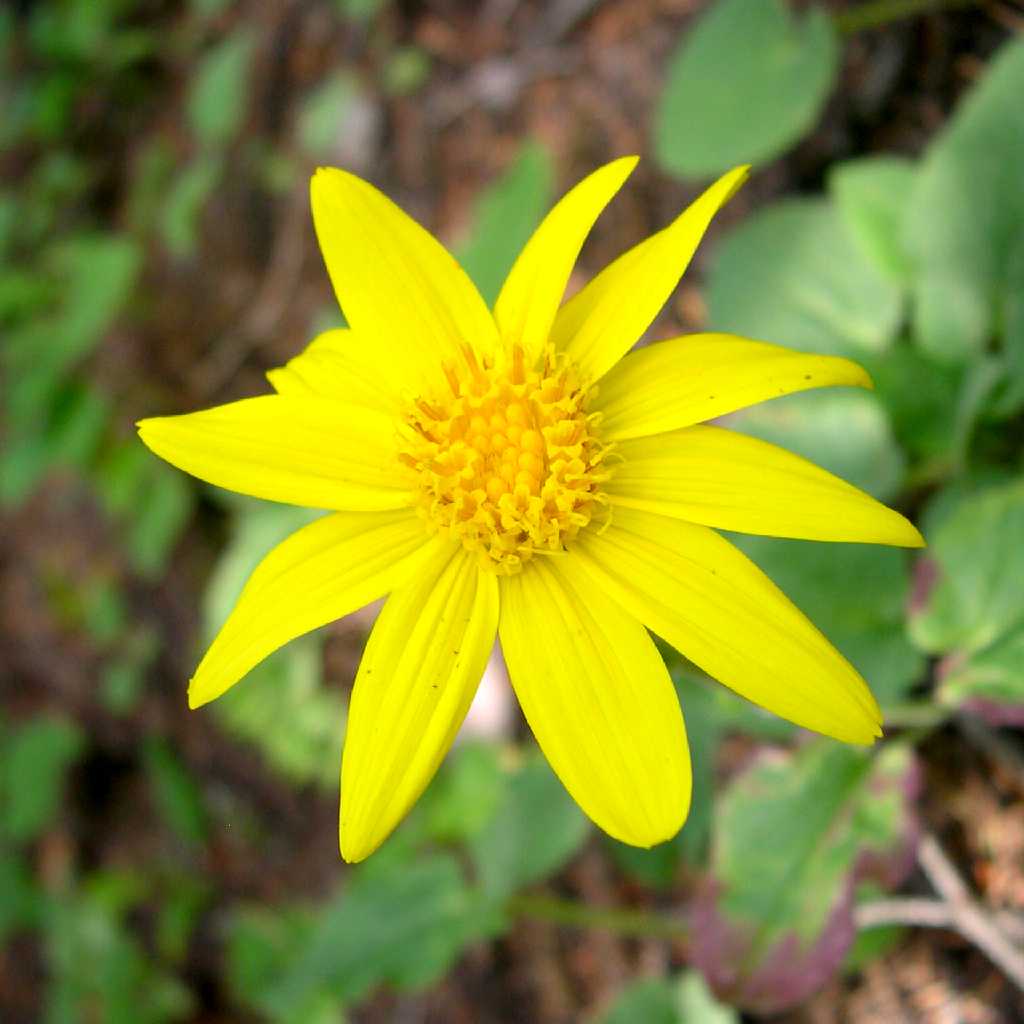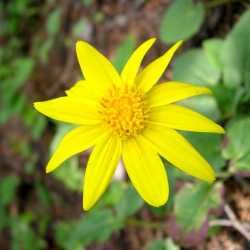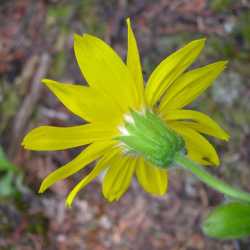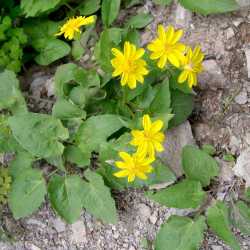Plants 10-40(-70) cm. Stems usu-ally simple, sometimes branched. Leaves 2-4(-6) pairs, mostly cauline (basal often persistent on sterile rosettes); petiolate; blades cordate or subcordate to ovate, 3-10 × 2-10 cm, margins dentate to coarsely dentate, apices acute to rounded, faces puberulent to sparsely villous, sometimes stipitate-glandular (especially adaxial). Heads 1, or 3-5(-10). Involucres broadly campanulate. Phyllaries 10-20, narrowly ovate to lanceolate. Ray florets 6-13; corollas yellow. Disc florets: corollas yellow; anthers yellow. Cypselae dark gray, 5-10 mm, sparsely to densely hirsute (hairs duplex), sometimes stipitate-glandular as well; pappi white, bristles barbellate. 2n = 38, 57, 76, 95, 114.
Flowering May-Jul. Conifer forests to subalpine meadows; 500-3000 m; Alta., B.C., Man., N.W.T., Ont., Sask., Yukon; Ariz., Calif., Colo., Idaho, Mich., Mont., Nev., N.Mex., Oreg., S.Dak., Utah, Wash., Wyo.
General: Perennial, 10-70 cm tall; stems erect, simple, occasionally branched; herbage glandular-hairy or loosely white-hairy; rhizomes long.
Leaves: Mostly cauline (basal leaves often persistent on sterile rosettes), opposite, 2-4 pairs, simple, heart-shaped to ovate, 3-12 cm long, 2-10 cm wide, surfaces glabrous to villous, sometimes glandular, apex acute to rounded, margins entire to dentate; lower blades long petiolate, upper blades sessile.
Flowers: Heads in raceme- or panicle-like clusters; phyllaries numerous, in 9-17 series, linear to linear-lanceolate, glabrous to densely cobwebby-pubescent, outer ones stiff, radiating, with hooked, spiny tips, inner ones often tinged purple, puberulent, sometimes with glandular hairs, margins finely toothed; disk flowers only, mostly 30 or more, 7.5-12 mm long, purple, pink, or white; flowers July-September.
Fruits: Achene, 5-10 mm long, dark gray, sparsely to densely pubescent, the hairs often forked, sometimes glandular; pappus white, the bristles barbed.
Ecology: Coniferous forests, meadows, streamside thickets in moist humus soils; 1500-3400 m (5000-11000 ft); Apache and Coconino counties; mid to western Canada, western U.S., northern Mexico.
Notes: Arnica chamissonis (chamisso arnica, leafy arnica) is distinguished by its opposite leaves arranged in 4-10 pairs, these lanceolate to oblanceolate or oblong; heads 3-10, rarely solitary; involucre campanulate, phyllaries are nearly linear to narrowly lanceolate, 8-13 mm long, the apex with a tuft of white hairs; achene is nearly glabrous or sparsely hirsute, stipitate-glandular; pappus straw colored, the bristles barbed or somewhat feathery. It occurs in similar habitats as A. cordifolia. Heartleaf arnica is an important food source in the summer for mule deer and elk, although it is only of fair palatability for livestock. Underground rhizomes allow it to survive fire. A poultice of the plant can be used medicinally for swellings, bruises, and cuts.
Editor: Springer et al. 2008
Rhizomatous perennial 1.5-4.5 dm, hairy or glandular or both; basal and lowest cauline lvs conspicuously petiolate, with strongly cordate base, to 11 נ8 cm, generally dentate; cauline lvs reduced upwards, becoming sessile; heads 1-3, the disk 1.5-2.5 cm wide; invol 12-20 mm; rays 10-15, 2-3 cm; pappus white, strongly barbellate; 2n=(38), 57, 76 (95), the polyploids apomictic. Dry woods; Keweenaw penins., Mich.; widespread in the w. cordillera. June, July. (A. whitneyi)
Gleason, Henry A. & Cronquist, Arthur J. 1991. Manual of vascular plants of northeastern United States and adjacent Canada. lxxv + 910 pp.
©The New York Botanical Garden. All rights reserved. Used by permission.






